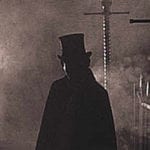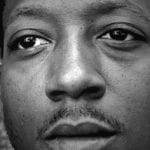 Music
Music  Music
Music  History
History 10 Less Than Jolly Events That Occurred on December 25
 Weird Stuff
Weird Stuff 10 Funny Ways That Researchers Overthink Christmas
 Politics
Politics 10 Political Scandals That Sent Crowds Into the Streets
 Weird Stuff
Weird Stuff Ten Bizarre Facts About The Doge Meme
 Our World
Our World 10 Ways Your Christmas Tree Is More Lit Than You Think
 Movies and TV
Movies and TV The 10 Coolest Stars to Set Sail on The Love Boat
 History
History 10 Things You Didn’t Know About the American National Anthem
 Technology
Technology Top 10 Everyday Tech Buzzwords That Hide a Darker Past
 Humans
Humans 10 Everyday Human Behaviors That Are Actually Survival Instincts
 Music
Music 10 Surprising Origin Stories of Your Favorite Holiday Songs
 History
History 10 Less Than Jolly Events That Occurred on December 25
 Weird Stuff
Weird Stuff 10 Funny Ways That Researchers Overthink Christmas
Who's Behind Listverse?

Jamie Frater
Head Editor
Jamie founded Listverse due to an insatiable desire to share fascinating, obscure, and bizarre facts. He has been a guest speaker on numerous national radio and television stations and is a five time published author.
More About Us Politics
Politics 10 Political Scandals That Sent Crowds Into the Streets
 Weird Stuff
Weird Stuff Ten Bizarre Facts About The Doge Meme
 Our World
Our World 10 Ways Your Christmas Tree Is More Lit Than You Think
 Movies and TV
Movies and TV The 10 Coolest Stars to Set Sail on The Love Boat
 History
History 10 Things You Didn’t Know About the American National Anthem
 Technology
Technology Top 10 Everyday Tech Buzzwords That Hide a Darker Past
 Humans
Humans 10 Everyday Human Behaviors That Are Actually Survival Instincts
10 Heinous Cases Of Misconduct By Crime Investigators
The integrity of the criminal justice system is intimately intertwined with the belief that we can trust the analysis of crime scene evidence. In the absence of good faith efforts to prove a suspect’s guilt or innocence, the societal dominoes that build our criminal justice system collapse into a tragic heap. Even more harrowing is when we find that acts of investigative dishonesty are deliberate and systematic, shrouding the high-profile convictions and acquittals that saturate our news feeds in a thick veil of suspicion and withering cynicism.
10Fred Zain Recklessly Lied About Rape And Murder Cases For 13 Years

Fred Zain’s academic record does not reveal the makings of a person fit to wield a beaker, let alone work in a forensics lab. A graduate of West Virginia State College, Zain had only managed to pass some of his chemistry courses by the skin of his teeth, while utterly failing in others. Somehow, these flashing signs of inability didn’t prevent him from landing jobs as a police chemist for the state of West Virginia and chief of physical evidence in Bexar County, Texas. But they may explain why Zain spent the duration of his forensics career habitually faking lab results and lying to courtrooms in order to secure criminal convictions.
Over a span of 13 years, prosecutors in two states sought out Zain’s ostensibly expert opinions, never questioning the fact that he managed to produce evidence with a certainty that other lab technicians couldn’t approach. This faith in Zain’s abilities sent untold numbers of innocent men behind bars, primarily for rape and murder charges. While some of those men were exonerated, the exact number of cases influenced by Zain is unknowable. And, from what is known, it’s clear that Zain’s dissembling reach was tremendous.
In West Virginia alone, Zain may have lied in as many as 182 different cases. And in addition to his work in a Texas crime lab, Zain served as a forensics consultant to 10 other states, creating the possibility that he lied across thousands of primarily rape and murder trials. As one would expect, the costs of cleaning up after the trail of investigative mayhem have been astronomical. West Virginia alone paid $6.5 million in compensation to innocent people convicted by Zain’s deception, and the state of Texas shelled out $850,000.
For Zain’s many victims, exoneration and compensation are the only justice possible. Fred Zain died of cancer after the first attempt at holding him accountable for his misdeeds ended in mistrial, and before retrial could begin. One can only hope that, in time, his legacy will evolve into one of wrongs righted by a wiser justice system, rather than the virulent injustices he authored.
9FBI Agent Repeatedly Steals And Fails To Report Evidence
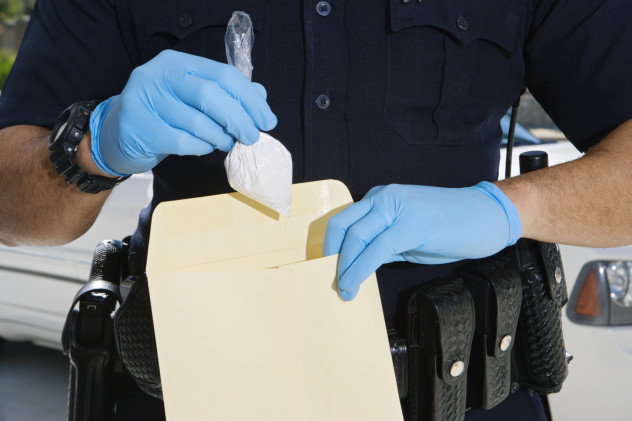
Though movies and media headlines have taught society to view police officers with an ample (but arguably healthy dose) of suspicion, pop culture’s treatment of the FBI has been comparatively favorable. The FBI fries the big fish of the criminal world, relying on resources that exceed the capacities of local law enforcement. And a certain heightened credibility comes with that. But, when an agent like Matthew Lowry is caught getting high on heroin that he stole from an FBI crime lab, that credence suffers greatly.
The son of a Sunday school teacher, a long-time law enforcement officer, and an honors graduate of the FBI Academy, Lowry was not exactly the spitting image of drug addiction. Yet, at some point during his five years as a Washington, D.C. FBI agent, he lost his way and was eventually found at the wheel of an FBI vehicle under the influence of drugs. In that moment, Lowry single-handedly torpedoed the prosecutions of at least 28 alleged drug offenders, many of whom are thought to be part of dangerous gangs, and he potentially compromised an additional 150 cases. While he has not been charged yet, he has been suspended while the authorities investigate these allegations.
The bulk of Lowry’s offenses entailed checking out drugs stored at the FBI lab as trial evidence, and returning them with altered weights after days, and sometimes months, of delay. But, in at least one other instance, he failed to submit marijuana and guns seized during a crime, and there is some cause to believe that he may have been involved in the displacement of $130,000 confiscated during an FBI search. But, like so many corruption cases, Lowry’s greatest crime may not be one which exists on any US law book.
Lowry’s unchecked indiscretions fly in the face of claims that the FBI has a rigorous drug testing policy and raise numerous questions about why the length of time he held onto evidence wasn’t questioned, ultimately implicating the FBI as an irresponsible actor. As the defense attorney for an alleged narcotics kingpin opined, “It stands to reason that the strict chain of custody claimed by the government in most cases is a sham.”
8CSI Chief Tilts Murder Scene Evidence In Favor Of the Prosecution

The abbreviation “CSI” has become a household term to capture the magic of Hollywood’s high-tech vision of forensic work. But, for residents of Douglas County, Nebraska, those three letters could just as easily stand for “Criminal Subterfuge in Investigations” thanks to disgraced David Kofoed, whose tenure as chief of the local CSI division was marred by the willful manipulation of DNA evidence in a series of murder cases.
The case, which earned Kofoed his first and greatest encounter with infamy, revolved around the suspects in a double murder: Nicolas Sampson and Matt Livers. Over the course of an 11-hour interrogation, local authorities managed to force a false confession from Livers, who is mentally disabled and eventually buckled under the pressure and repeated threats of incarceration.
To buttress law enforcement accusations, Kofoed planted traces of blood which tied the suspects to the murder scene, ultimately securing a guilty verdict in court. However, additional evidence later led authorities to the actual perpetrators of the double homicide and exposed Kofoed’s deception.
The retribution was prompt and costly. In addition to spending more than two years in prison for his misdeeds, Kofoed was slapped with a lawsuit for playing God with Sampson’s and Livers’s lives. A civil court awarded the plaintiffs a total of $6.5 million—a gesture which is more symbolic than practical in light of Kofoed’s inability to pay the fine.
Subsequent exploration of Kofoed’s other cases revealed a pattern of dubious handiwork. In 2003, Kofoed linked Ivan Henk to the murder of four-year-old Brendan Gonzales with what was likely a manufactured blood sample that prompted Henk’s arrest and eventual guilty plea. In 2006, he faked DNA evidence that was used to solve the murder of Jessica O’Grady. On the the basis of falsified evidence, her presumed killer, Christopher Edwards, may now have legal grounds to overturn an otherwise convincing murder conviction. Ironically, the work of a man determined to secure criminal convictions, regardless of innocence, may allow an apparently guilty man to go free.
7Sex Crimes Investigators Alter And Neglect Evidence In Over A Dozen Rape Cases
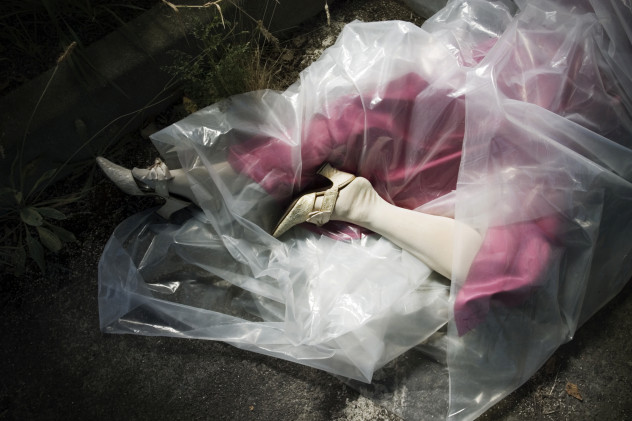
Second only to Sherlock Holmes and Batman, Scotland Yard is what people associate with excellence in detective work. And, for a time, its Sapphire sex crimes unit was expected to be no exception. But when the unit faced blistering criticism over a barrage of bungles that allowed a prolific rapist to prey on more than 70 women and another to victimize up to 102 people, a number of Sapphire investigators categorized cases incorrectly, attempting to artificially reduce the number of unsolved sexual assaults.
According to a 2010 investigation by the Independent Police Complaints Commission (IPCC), a detective constable and two trainees revised the statement of a rape survivor to suggest that she had retracted her claims. This blatant falsification of a crime report, the IPCC found, was part of a concerted effort by senior officials in the Sapphire unit to improve the rate of solved rape cases in part by recording a higher number of non-offenses.
The grim implications of such a callous disregard for the law were clear: In order to improve the Sapphire unit’s image, these three men were willing to deny victims justice and permit violent predators to roam free among the vulnerable. And they weren’t alone in this scandal.
In a separate, more jarring, example of wanton duplicity, detective constable Ryan Coleman-Farrow, another member of the allegedly elite Sapphire unit, simply declined to pursue the claims of at least 12 women who reported sexual assaults between 2007 and 2010. Over the course of this three-year period, Coleman-Farrow not only neglected to interview suspects, but also forged victim statements, allowed video evidence to remain untouched, and failed to bring forensic evidence to the proper channels. As a result, the cases against 11 suspected rapists have gone cold, perhaps never to be solved.
In the face of brazen inaction by Scotland Yard’s sex crimes investigators, a drastic rejiggering of the force followed. The Sapphire unit was merged with the Metropolitan police force’s child abuse division, and bolstered with 100 additional officers in what was essentially a vote of “no confidence” for what was supposed to be a world-class collection of crime solvers.
6New York Police Plant Drugs On Innocent People To Fill Arrest Quotas
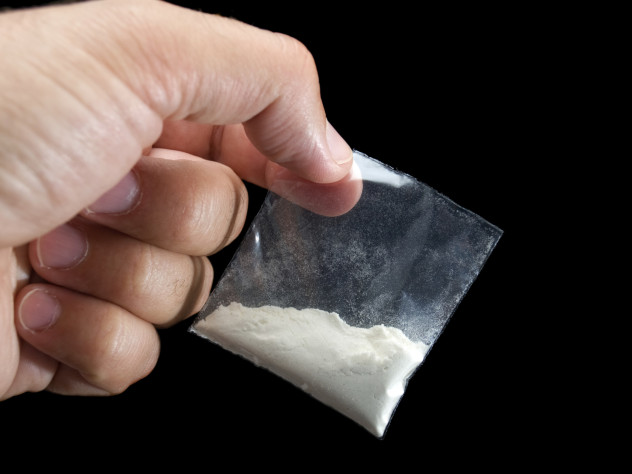
In 2008, Brooklyn cops were caught siphoning off drugs confiscated in arrests which, for many observers, would constitute a textbook case of crooked policing. But, according to law enforcement, those drugs were being used to pay informants for information that would lead to major arrests in a case of “noble cause corruption.” Three years later, the public was blindsided by the news that the tale of evil woven by New York’s finest was also a cover for the intentional arrest of innocent people.
In hindsight, one might characterize the scandal as a logical offshoot of the very system which condemns its criminality. With police performance measured in numbers of arrests, officers who failed to book enough criminals risked such penalties as being removed from undercover assignments. According to Officer Steve Anderson, who himself was caught partaking in the scheme, this translated into undercover narcotics agents handing over some of the drugs purchased during covert operations to officers who were struggling to meet arrest quotas. Those struggling used the extra drugs to frame innocent people.
Anderson’s account of the illegal evidence planting operation wasn’t enough to convict every officer he claimed had framed innocent people to pad their arrest numbers. But the evidence of his wrongdoing, along with the actions of other Brooklyn officers, was enough to throw out 400 different drug cases and secure the release of over two dozen people wrongfully arrested on drug charges. In addition to bearing the financial burden of revisiting tainted convictions, the government has agreed to award $1,000 for each hour of wrongful incarceration endured by an innocent person, leading to compensation for at least 25 people believed to have been booked on bad evidence.
Some costs, however, may be incalculable. The reputation of Brooklyn’s officers has been doubly besmirched, as not only had they likely been arresting innocent people for years as a matter of convenience, but they covered up that behavior by casting themselves as heroic wrongdoers when, in reality, they were simply doing wrong.
5New York State Troopers Fake Fingerprint Evidence For Nearly A Decade
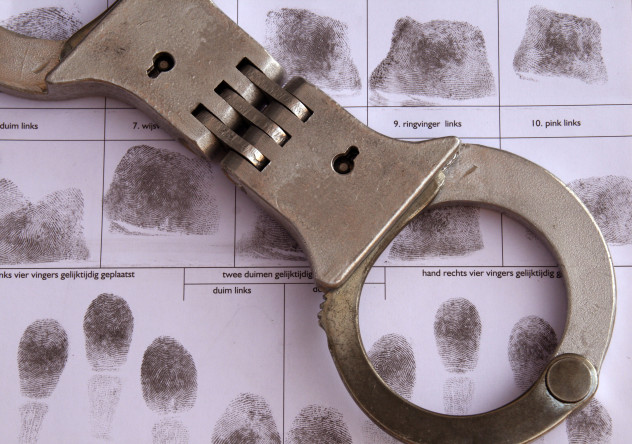
In 1989, the Harris family of Dryden, New York became the victims of a grisly murder. The family of four was bound and gagged, a 15-year-old female raped and tortured, and the whole family shot in the head before their home was set on fire. Two people were convicted and imprisoned for that brutal affair: Michael Kinge and his mother, Shirley.
But, after spending two and a half years of a 17- to 44-year sentence behind bars for burglary and arson, Shirley Kinge was released. Fingerprint evidence that tied her to gasoline cans used in the arson had been planted by New York State Troopers.
Shirley Kinge’s plight was one of at least 36 instances of evidence planting perpetrated by members of the New York State Troopers’ C Division and at least one member of Troop F. Between 1984 and 1992, members of New York State Troopers’ C Division, and at least one member of Troop F, systematically fabricated fingerprints and other evidence. And, for those eight years—which is a long time to get away with any crime—those troopers helped decide thousands of felony cases across more than half a dozen counties across New York.
At the heart of the scandal were five forensic investigators from Troop C. According to investigators, these individuals benefited from a culture of lax, and even tacitly complicit, oversight that nurtured a felonious hubris. A sixth officer, situated in Troop F, had long known the other five perpetrators and undoubtedly shared in their criminal nonchalance, even planting evidence in one instance where a conviction would have been secured without it.
Troop C’s incorrigible corruption might have gone unchecked were it not for a miscalculation by former trooper David Harding. While interviewing with the CIA, Harding touted his evidence planting exploits as an example of his ability to conduct covert operations, somehow failing to comprehend that admitting to a string of serious crimes might get him in trouble with the government. The ensuing investigation resulted in guilty pleas from five troopers and a criminal conviction of the sixth. But perhaps the most significant outcome was a rule change requiring more rigorous checks to confirm fingerprint evidence.
4Delaware Drug Lab Compromises Thousands Of Cases Through Sloppiness And Theft

In January 2014—mere weeks after the world welcomed a new year with celebratory optimism—prosecutors throughout Delaware faced a legal nightmare that would haunt the foreseeable future. It began during the trial of a suspected Oxycontin dealer, when the court discovered that confiscated drugs had vanished and been replaced with heart medication. In the months that followed, investigators revealed a pattern of malfeasance and unprofessionalism that would tax and tarnish Delaware’s criminal proceedings.
Between 2010 and 2012, there were over 50 thefts from the state Medical Examiner’s Office. Sometimes, the stolen items were replaced with false evidence. But, in truth, the lab had been plagued by corruption long before those thefts ever occurred. And a big part of the problem could be pinned on the man running the show: Chief Medical Examiner Richard Callery.
Helmsman of the drug lab for nearly two decades, and himself suspected of professional improprieties, Callery had overseen a spate of irresponsible hiring decisions. One of the drug thieves, James Woodson, was hired despite allegations that he had stolen evidence from the New Castle Police Department in Delaware. In 2006, the lab rehired a forensic analyst who previously resigned under suspicion of falsifying data. And, in another case of negligence, Callery failed to fire a chemist who had failed required proficiency tests.
With a team of criminals and incompetents running the drug lab, unconscionable misconduct ensued. For 14 years, the lab relied on malfunctioning equipment that incorrectly logged all evidence entry dates as January 1, 1970. In another instance, a former employee had managed to hold onto an evidence locker pass key six years after leaving the job. And some of the lab’s forensic data is believed to have been falsified. The overwhelming evidence of lab misconduct has already resulted in the dismissal of 200 drug cases and reduced sentences in 60 more. But that’s only the beginning. An additional 500 convictions are slated to be challenged with thousands more in the works.
3The Philadelphia PD’s Narcotics Unit Resembles A Mafia Operation
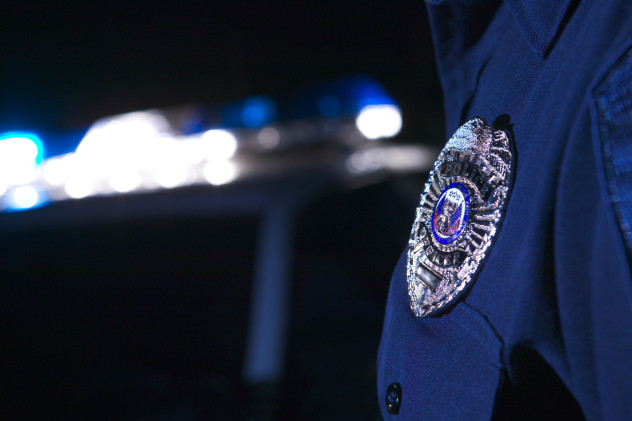
Every city has ignominious chapters in its history that it would rather forget. For Philadelphia, one of those chapters is undoubtedly devoted to its 39th district police officers. In a scandal that broke on the heels of extensive efforts to reform Philadelphia’s habitually corrupt police force, the officers of the 39th shocked the conscience of Philadelphia with tales of false arrests, evidence tampering, violence, and even theft.
Everyone from criminals to harmless grandmothers were targets of the 39th district, as feared figures like the infamous John Baird ran roughshod over mostly poor black citizens with virtual legal impunity for years. Individuals like 54-year-old Betty Patterson spent three years in prison on false charges of selling cocaine thanks to planted evidence. Over the course of a 14-year career, Baird was the target of nearly two dozen official complaints related to his propensity for police brutality, inflated criminal charges, robbing drug dealers, and the wholesale planting of narcotic evidence on innocent people—an impressive list of evils to say the least.
But, despite even the presence of eyewitnesses who could attest to grotesque law enforcement misconduct, charges leveled against Baird and other officers were consistently dismissed as baseless until Philadelphia investigators and federal agents finally began pursuing the matter in 1991. The exploits of the 39th district eventually made media headlines in the mid-1990s. In the years that followed, more than 1,400 cases were reviewed, hundreds of convictions overturned, and $5 million in compensation was awarded to victims of the police. In addition, eight officers were ultimately convicted for their crimes, reversing a longstanding trend of wrongfully incarcerating innocent people in the city of the Liberty Bell.
But, despite the laudable efforts of local and federal officials to stem the tide of narcotic officer corruption in Philadelphia, rampant corruption is alive and well on the streets of Philadelphia. In 2014, a group of police officers was apprehended after executing a vicious extortion plot that involved kidnapping, threats, and even holding criminal suspects out of windows. Apparently, old habits die hard.
2Houston Crime Lab Has A Long History Of Shoddy Lab Work And Biased Testimony
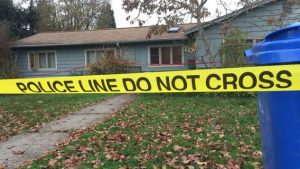
In the state of Texas, America’s death penalty capital, forensic analysts weighing in on cases of rape and murder literally tip the scales in favor of life or death for a defendant. It’s a grim burden that grows ever heavier in light of the fact that, for decades, the Houston Police Department crime lab has relied on faulty DNA analyses and bogus courtroom testimony that, according to a lab director, have tainted at least 5,000 to 10,000 cases.
Forensic analyst James Bolding demonstrated overwhelming incompetence and willful dishonesty in his work, appearing not to grasp even the basics of blood sample analysis, while providing courtroom testimony that wrongfully imprisoned men like George Rodriguez, who languished behind bars for 17 years for a rape he didn’t commit, and Josiah Sutton, who was wrongly incarcerated for four years.
Bolding, and the hundreds of cases he compromised, were emblematic of a culture of inadequacy at the Houston crime lab, where numerous technicians knowingly conducted unreliable analyses in a lab which itself was woefully sub-par. Disorganization was rife, and records were regularly falsified. Even before the shoddy evidence testing began, samples were often contaminated via a leaky roof.
With examples of misconduct extending into the 1980s, the Houston crime lab precipitated a lengthy reign of errors that has led to two mandatory shutdowns. In 2002, the facility was closed due to unacceptably shoddy lab work and, in 2008, an internal affairs probe uncovered evidence of cheating on lab proficiency tests, resulting in a second closure.
Then, 2014 brought yet another wave of criticism when another forensic analyst resigned after revelations that he eschewed lab protocols and falsified official records, casting an all-too-familiar doubt on roughly 180 criminal cases.
With the rate of laboratory malfeasance far outpacing the capacity of authorities to address it, we may never fully ascertain just how many lives were ruined or potentially lost thanks to the Houston Police Department’s forensic infractions. But the sheer scale of ineptitude and invalidation wrought by this crime lab arguably rivals the grievous nature of the crimes it was tasked with solving.
1Lab Tech Annie Dookhan Faked Up To 60,000 Drug Sample Analyses

For nine years, Annie Dookhan worked as a crime lab chemist in Massachusetts, performing drug tests for criminal cases. And, in that capacity, she seemingly set a bar for excellence that was prohibitively high. Over her career, Dookhan completed as many as 60,000 analyses, making her partly responsible for an estimated 11,000 criminal convictions. All the while, she outpaced her colleagues in productivity, sometimes by a factor of three. Unfortunately, Dookhan wasn’t some laboratory wunderkind with a passion for drug offenses. In fact, she didn’t even have the master’s degree she claimed to have earned. Rather, she had been faking test results at a rate of thousands per year.
In some ways, it can be said that Dookhan was just giving her superiors what they wanted. In the results-driven world of laboratory work, her virtually inhuman ability to amass test results placed Dookhan in a position of distinction. Few questioned it when, in 2010, as her lab saw a drastic decrease in the number of drug analyses completed, Dookhan’s output skyrocketed, accounting for an astounding 31 percent of all the evidence processed by her lab—10,933 samples in all.
When she testified on the witness stand to voice her certainty of a defendant’s guilt in a drug case, no one suspected that she was sometimes adding cocaine to evidence samples to produce incriminating results. The consequences of that complacency have been devastating for Massachusetts.
Since the discovery of Dookhan’s conduct, at least 1,100 criminal cases have been dropped or dismissed and at least $8.5 million has been spent attempting to account for her mountain of faked lab data. In addition to the untold numbers of people who have been convicted on faulty evidence, a fair number of known violent drug offenders have also been released, leading to an increase in the crime rate and time spent rearresting offenders released because of fabricated evidence.
In the wake of the legal, ethical, and financial chaos wrought by Annie Dookhan, her punishment may strike many as light. After pleading guilty to perjury, obstruction of justice, and evidence tampering, she received a prison sentence of three to five years, followed by two years of probation. In the meantime, the criminal justice system will be left to clean up the countless messes caused by a single person with too much incentive to lie and too little oversight.





